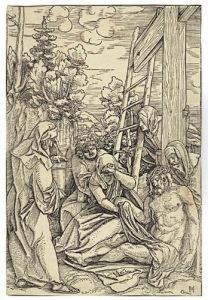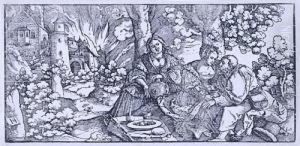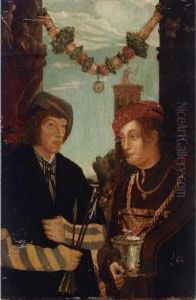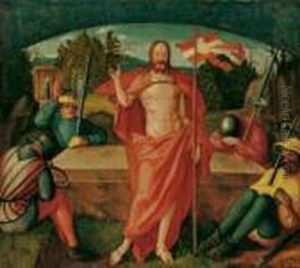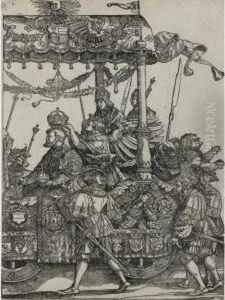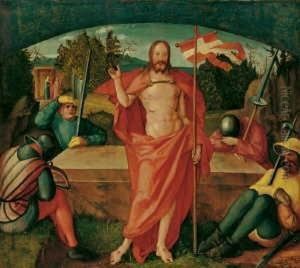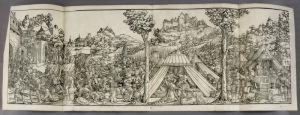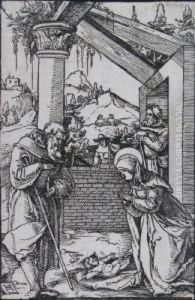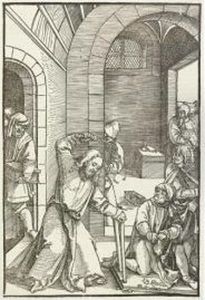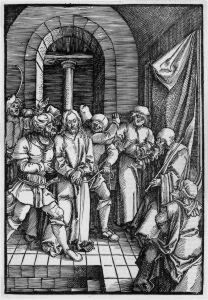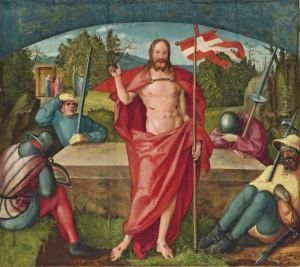Hans Leo. Schauffelin Paintings
Hans Leonhard Schäufelein, also known as Hans Schauffelin, was a notable German artist of the Renaissance period, esteemed for his contributions to painting and printmaking. Born around 1480, presumably in Nördlingen, Schäufelein is recognized for his significant role in the development of the German Renaissance art movement. He was a pupil of Albrecht Dürer, one of the most celebrated figures in German Renaissance art, and his early works show strong influences from his mentor, particularly in the intricate details and the robust, expressive characters depicted in his compositions.
Schäufelein’s career is marked by his versatility, mastering both the mediums of woodcut and painting. His woodcuts contributed extensively to the proliferation of Renaissance ideals and aesthetics beyond the affluent patrons to a broader public, thanks to the advent of the printing press. Among his notable contributions to printmaking are his illustrations for books, which were pivotal in disseminating the Renaissance humanist culture.
After his apprenticeship with Dürer, Schäufelein established himself in Nördlingen and later worked in various Southern German cities. His paintings often depicted religious scenes, characterized by their vivid narrative style and attention to detail, elements that were highly praised during his time. Schäufelein’s work as a court artist for Duke Ulrich of Württemberg marked the pinnacle of his career, during which he executed several significant commissions.
Despite his contributions, Schäufelein’s work was somewhat overshadowed by his contemporaries, such as Dürer, and it wasn’t until later centuries that his art received the recognition it deserved. His legacy lives on through his influence on the German Renaissance and the numerous works he left behind, which continue to be studied and admired for their historical significance and artistic merit.
Hans Leonhard Schäufelein passed away around 1538, leaving behind a body of work that encapsulates the vibrancy and dynamism of the Renaissance era in Germany. His artistry remains a testament to the rich cultural and artistic milieu of his time.
